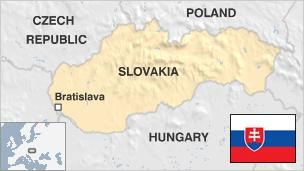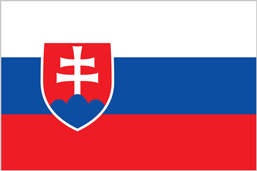Overview
Slovakia, is a landlocked country in Central Europe; bordered by Poland to the north, Ukraine to the east, Hungary to the south, Austria to the southwest, and the Czech Republic to the northwest. Slovakia is a beautiful, predominantly mountainous country of roughly 49,000 square kilometres.
Slovakia joined the European Union in 2004 and adopting the euro in 2009.
The country has population of 5.4 million, and the main language is Slovak, which is a Slavic language group. Minority groups include: Hungarian, Czech and Germans.
The Slovak Republic has a small, open economy driven mainly by automobile and electronics exports, which account for more than 80% of GDP.
Sound Economic reforms implemented after 1998 placed Slovakia on a path of strong growth.

Panoramic nature in Slovakia
Socio-Economic Profile
The Slovak economy is a resilient stable growing economy, with short-term growth prospects looking good combined with record high employment and unemployment is at its lowest levels in more than two decades. The sustained economic growth rate averaged almost 4%, over the last 20 years; leading to improved living standards, and declining public debt in relation to the GDP.
Slovakia has pursued a strong FDI and Export development drive which has been propelled by continued investments into the automotive industry, together with determined integration into international value chains, and enhancements in labour productivity.
Investments and Exports have been key drivers of Slovakia’s robust growth in recent years, which in turn have been accompanied by positive economic growth in the domestic services sector; while increased wage growth has been driving domestic consumption.
Slovakia experienced an GDP growth rate of 2.3% last year, while the European Commission have predicted that the Slovak economy will grow at 2.2% during 2020, and +2.6% in 2021.
The most important contributors to the GDP of Slovakia are: Industry and manufacturing at 35%, the Services sector at 61.2%, and Agriculture accounting for 3.8%.
Industrial products comprise of: Automotive products and cars; metal and metal products; electricity, gas, coke, oil, nuclear fuel; chemicals, synthetic fibers, wood and paper products; machinery; earthenware and ceramics; textiles; electrical and optical apparatus; rubber products; food and beverages; as well as pharmaceutical products.
Agricultural products comprise of: Grains, potatoes, sugar beets, hops, fruit; pigs, cattle, poultry; forest products.
Slovaka’s sovereign credit ratings are as follows: Standard & Poor’s credit rating is at A+ with stable outlook. Moody’s credit rating is at A2 with stable outlook, and Fitch’s credit rating is presently at A+.

Panoramic nature in Slovakia
The Tourism sector have had excellent growth and development over the last two decades with great improvements and investments across the hospitality sector.
5.49 Million domestic and foreign tourists visited Slovakia in 2019, with about 60% of these visitors being domestic tourists.
Brief Socio-Economic Profile – 2019

Slovakian village in winter
Population: 5,4 million
GDP (PPP): $179.4 billion
GDP Growth: 3.4%
GDP 5-yearcompound annual growth: 3%
GDP per capita: $33,025
Unemployment Rate: 8.1%
Inflation Rate (CPI): 1.3%
Foreign Direct Investment (FDI) Inflow: $2.3 billion
The Slovak Republic is ranked 32nd among 44 countries in the Europe region.
Slovakia part of the Visegrád Group – Group of 4 Nations

The Visegrád Group of 4 countries: Poland, Hungary, Czech Republic, and Slovakia, are uniquely positioned within the EU, in terms of:
– Fundamental Christian Civilization and Principles; Safe, Secure, low crime environment; Stable Society
– Open to Socio-Economic Development Initiatives; Support and Appreciation of Education; Rich Culture & Heritage; Strong Economic Growth and Prospects; Low Inflation and Low Unemployment
– Excellent Investment climate and Incentives
– More and more people in the region who can speak English (especially the youth), etc.
Socio-Economic Significance of this Visegrád Group:
* If this region was measured as a collective single state, the V4 would be the 5th largest-economy in Europe and rank 12th in the World!
* The combined population of 64 million would place it 22nd largest in the world and the 4th in Europe.
* Poland has the largest population in the V4 Grp (38 million), followed by the Czech Republic (11 million), Hungary (10 million) and Slovakia (5.5 million).


